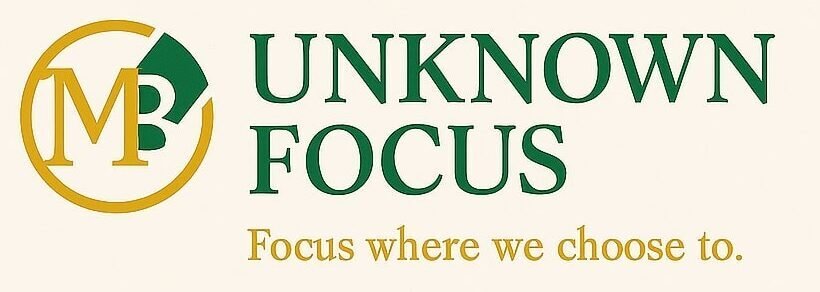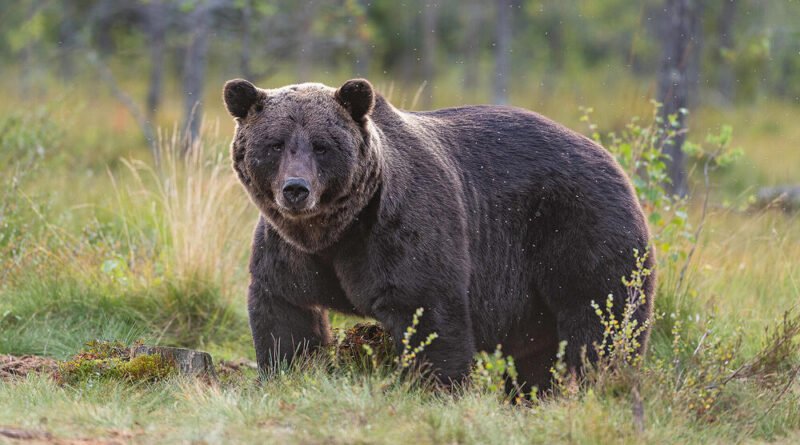From Childhood Companion to Nature Ally: Teddy Bears’ Role
Speed-read
- The researchers analyzed the visual, olfactory, and tactile characteristics of teddy bears, as well as the effect of ownership on their comforting power. The findings they got, based on 400 participants, showed that the emotional bond was the most important factor, while softness and tactile impressions, along with visual and olfactory features, also played a significant role.
- In the second study published in July this year, researchers analyzed 436 photos of teddy bears with the help of 11,188 French participants aged 3 to 92. The study showed that people link beauty and comfort to feelings of care, with perceived softness being the strongest factor in how ‘cute’ a teddy bear looks. Additionally, the researchers were also interested in whether participants had stuffed toys during childhood and which ones.
- Attention then turned to the questions: how do the traits that explain emotional attachment to teddy bears relate to the very species they are meant to represent? How faithful are they to their natural counterpart?
- “We found that real bears form a well-defined cluster that is clearly distinct from the teddy bears,” the scientists wrote in the study. The researchers therefore recommend incorporating more realistic morphological and visual features into the design of teddy bears, so that the emotional connection these toys evoke aligns more closely with the real world of animals.
In 1902, a renowned hunter refused to shoot a tied-up bear… and the Teddy Bear came to life, soon becoming more than just a toy.
It was 1902, on a cold November morning in Mississippi. The day’s low temperature was around 48.5°F (9°C), while the afternoon reached around 70°F (21°C). President Theodore Roosevelt was on a hunting trip near the small town of Onward, Mississippi. However, as the animals eluded him, his assistants captured a black bear and tied it to a tree. When they called President Roosevelt to shoot, he refused, considering it unsportsmanlike. His act quickly became news, and political cartoonist Clifford Berryman drew the famous cartoon depicting President Roosevelt sparing the bear. Seeing the cartoon, Morris Michtom, a candy shop owner in Brooklyn, was inspired to create a stuffed bear in honor of the president. After receiving Roosevelt’s blessing to use his name, Michtom created the Teddy Bears. Its success was so great that it led him to found the Ideal Toy Company.
Today, Teddy Bears continue to spread warmth across the world, with the global market valued at USD 6.26 billion in 2024.
However, today it is more than just a bedtime toy – the Teddy Bear also inspires scientists and is being explored as a valuable tool for conservation.
Three studies and their authors reveal how toys can foster emotional attachment, offering valuable insights for our website. Professors Nathalie Blanc, Anne-Sophie Tribot, and Nicolas Mouquet collaborated on these studies, involving more than 11,500 participants, to analyze how the visual, tactile, and olfactory properties of stuffed toys influence feelings of security and comfort in children and adults. Their joint research shows that an emotional connection to a toy can shape long-lasting patterns in how people experience animals—and may also point to areas where change is needed. In these studies, they collaborated with their colleagues Thierry Brassac (Université de Montpellier) and Nicolas Casajus (FRB-CESAB).
Two complementary studies with more than 11,500 participants
In 2023, during the European Researchers’ Night, scientists set out to answer the question: what truly gives a teddy bear its comforting power? The participants were visitors of this event, held annually across Europe. The researchers analyzed the visual, olfactory, and tactile characteristics of teddy bears, as well as the effect of ownership on their comforting power. The findings they got, based on 400 participants, showed that the emotional bond was the most important factor, while softness and tactile impressions, along with visual and olfactory features, also played a significant role.
A survey of 11,000+ participants shows teddy bears are childhood classics
In the second study published in July this year, researchers analyzed 436 photos of teddy bears with the help of 11,188 French participants aged 3 to 92. The study showed that people link beauty and comfort to feelings of care, with perceived softness being the strongest factor in how ‘cute’ a teddy bear looks. Additionally, the researchers were also interested in whether participants had stuffed toys during childhood and which ones. Of those surveyed, 86.3% answered yes, 9.7% said no, and 3.9% did not remember. The teddy bear was by far the most common choice, accounting for 45.3% of responses, followed by rabbits (13%), dogs (7%), and other animals.
In response to a question about what they found most interesting, the corresponding authors, Nathalie Blanc, Professor of Psychology at the Université de Montpellier Paul-Valéry, Epsylon-LAPECS, and Anne-Sophie Tribot, Junior Professor at Aix Marseille Université, TELEMMe, explained that they found it remarkable how beauty and comfort combine to generate a protective instinct.
“That has implications for understanding empathy, prosocial behavior, and how culture shapes our sense of what is lovable. For instance, children preferred colorful, bright teddy bears, while adults leaned toward the classic brown teddy bear stereotype. This shows that our perception of cuteness evolves over time and is shaped by prior exposures. We also found it fascinating that the study shows even without touching, people could sense softness from visual cues, and that softness turned out to be the strongest driver of cuteness. This suggests that visual cues linked to touch and the resulting feelings of safety are prioritized when processing teddy bear images. In other words, looking at something soft may, even without touching it, already activate responses associated with comfort and caregiving,” Professors Blanc and Tribot jointly noted.
Professor Blanc explained that, when comparing modern teddy bears with older ones, they observed an impressive diversification in both shapes and colors. “This is likely linked to marketing strategies designed to meet children’s tastes, which are generally more varied than those of adults. As a result, some recent specimens have an appearance that is very far from real bears, which may have implications for our relationship with nature. On the other hand, we also observe a diversification among the species represented in recent stuffed toys, including various animals and even all kinds of plants. This has implications for biodiversity conservation, as exposing children early to a wide variety of organisms, not just the cutest or most charismatic, can foster empathy and curiosity for a broader range of species,” Professors Blanc and Tribot added.
Attention then turned to the questions: how do the traits that explain emotional attachment to teddy bears relate to the very species they are meant to represent? How faithful are they to their natural counterpart?
“Our first nature-based solution might be a teddy bear.”
“If we are to rebuild our collective relationship with nature, not just cognitively but emotionally, we must attend to the sensory pathways through which this relationship first takes shape. And sometimes, what hides in plain sight can be the most instructive: Our first nature-based solution might be a teddy bear,” the scientists noted in a new study called “Too Cute to Be Wild: What Teddy Bears Reveal About Our Disconnection from Nature.”
In the study, researchers compared 436 teddy bears used in the second study with 11 species of real bears to see how closely the toys resembled actual animals. The analysis showed that stuffed animals that create emotional connections with humans do not reflect real biology. As a result, children may develop unrealistic expectations about how wild animals look and behave in nature. “We found that real bears form a well-defined cluster that is clearly distinct from the teddy bears,” the scientists wrote in the study.
The researchers therefore recommend incorporating more realistic morphological and visual features into the design of teddy bears, so that the emotional connection these toys evoke aligns more closely with the real world of animals. Why? “If the teddy bear is indeed among the child’s first nature encounter, then our early emotional bond with an imaginary bear may set the foundation for how we later relate to wildlife. What does this mean for action? It means that fostering emotional connections to nature must begin far earlier than we currently assume,” they explained.
The corresponding author of the new study is Nicolas Mouquet, Scientific Director of the Center for the Synthesis and Analysis of Biodiversity (CESAB) and Researcher at MARBEC, University of Montpellier, France. He answered a few questions about the study for Unknown Focus.
Given that many children today prefer mobile phones to traditional toys, how might this influence their future relationship with nature?
Nicolas Mouquet: When we were children, our first “wild animals” often came to us through toys like teddy bears. In our survey of nearly 11,200 people, 86% said they had a cuddly toy growing up, and almost half of those were teddy bears! They are soft and reassuring, creating a physical and emotional link with the image of a living animal, a link that often stays with us for life. Today, many kids spend more time on screens than with toys. They see animals on screen, of course, but mostly through cartoons, emojis, or videos. They lack that tactile, comforting tactility you get from holding a plush animal.
When you hug a teddy bear, it’s a safe, sensory experience; you are, in a way, holding nature close. With a screen, the relationship is more abstract. I’m not saying that toys like teddy bears are enough; of course, they will never replace direct contact with the natural world. But they act like little totems, carrying a power over our emotional development and contributing to shaping the way we connect to nature later in life.
It’s not just about the toy itself, but also about the contact and connection it creates. Do you think this kind of bond is stronger and more impactful than, for example, picture books or stories about animals?
Nicolas Mouquet: These objects are incredibly powerful because they accompany us through all our childhood development. Books and stories are wonderful too; they spark imagination and teach us about animals, plants, and ecosystems. But a toy is different: it’s tangible. You can hold it, hug it, or even talk to it. It becomes part of your daily life. So, yes, I believe the bond with a stuffed animal is often stronger than with a story or a picture. But it’s not a question of choosing one over the other; they actually work together. Together, they help children not only learn about animals but also feel connected to them and truly care about them.
Your research highlights childhood development, the way we are raised through toys, and the influence of something as simple as a teddy bear. Do you think enough research of this kind is being done? What else would you like to explore on this topic?
Nicolas Mouquet: Not nearly enough! Most research on the connection between nature and childhood development looks at direct factors, like time spent outdoors or environmental education programs. Those are, of course, essential. But what we’re trying to show is that, especially in Western societies, our relationship with nature actually begins much earlier, often in subtle, almost invisible ways, like the toys we play with.
Looking ahead, there are two questions I find particularly exciting: (1) Diversity of representation. Most toys and images focus on a handful of charismatic species like pandas or lions. What would happen if children were exposed to a wider variety of animals, including ones that aren’t traditionally seen as “cute”? (2) Cultural differences. Our research has mostly focused on Western contexts. It would be great to understand how toys and childhood symbols vary across cultures, and how that shapes pro-nature values later in life.
Teddy bears and other stuffed animals serve as gentle, symbolic guides to nature, allowing children to develop emotional connections that can later shape the way they experience and care for the real world around them. While teddy bears can bring nature closer to children, real bears and many other animal species face serious pressures worldwide. Poaching, climate change, habitat destruction, and conflicts with people threaten numerous populations. This is why it is important to build a foundation for empathy, care, and responsibility toward animals, the environment, and global biodiversity from the earliest days. Even simple stuffed toys can become the first step in that gentle and, most importantly, real connection with nature.
Image: Brown Bear/WWF


